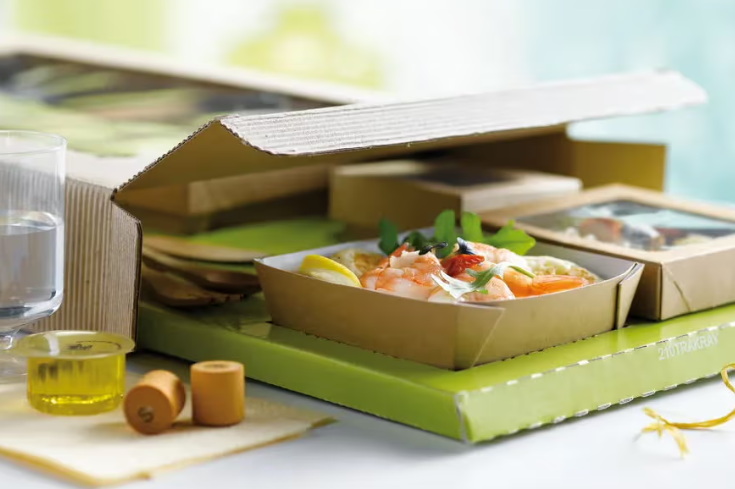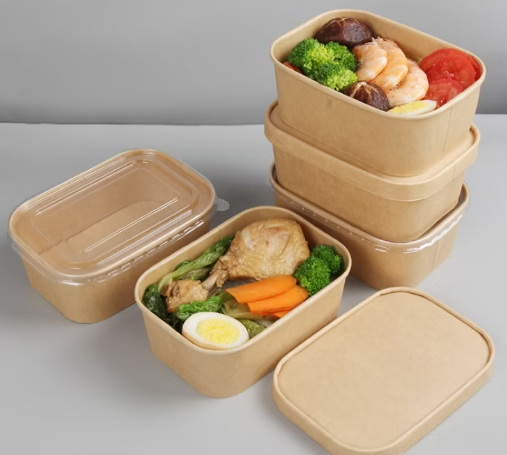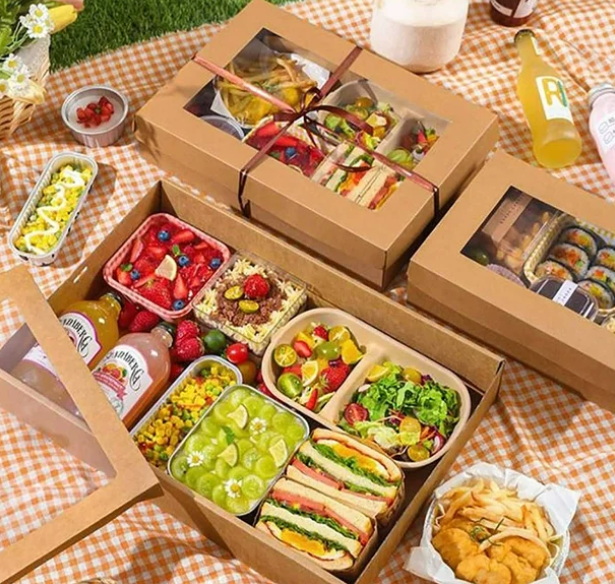
Content Menu
● Introduction to Disposable Lunch Boxes
>> Advantages of Disposable Lunch Boxes
● Safety Concerns with Hot Food
● Materials Used in Disposable Lunch Boxes
● Environmental Impact
>> Environmental Concerns
● Alternatives to Disposable Lunch Boxes
>> Reusable Lunch Box Options
>> Benefits of Reusable Lunch Boxes
● Choosing Safe Disposable Lunch Boxes
>> Tips for Safe Use
● Conclusion
● FAQs
>> 1. What are the health risks of using disposable lunch boxes for hot food?
>> 2. Are all disposable lunch boxes safe for hot food?
>> 3. What materials are commonly used in disposable lunch boxes?
>> 4. What are the environmental impacts of disposable lunch boxes?
>> 5. What are some alternatives to disposable lunch boxes?
● Citations:
In recent years, disposable lunch boxes with compartments have become increasingly popular due to their convenience and ability to keep different foods separate. However, concerns about their safety, especially when used for hot foods, have risen. This article will delve into the safety aspects of using disposable lunch boxes with compartments for hot food, exploring the materials used, health risks, and environmental impact.

Introduction to Disposable Lunch Boxes
Disposable lunch boxes with compartments are designed to be user-friendly, allowing users to pack a variety of foods in one container. They are commonly made from materials such as plastic, foam, or paper-based products. These boxes are ideal for meal prepping, school lunches, and catering services due to their convenience and portability.
Advantages of Disposable Lunch Boxes
1. Convenience: They are easy to use and dispose of, eliminating the need for cleaning and reusability.
2. Portion Control: The compartmentalized design helps in maintaining portion sizes and preventing cross-contamination.
3. Variety: Users can pack a variety of foods, including main courses, sides, and desserts, without mixing flavors.
Safety Concerns with Hot Food
When it comes to storing hot food in disposable lunch boxes with compartments, several safety concerns arise:
1. Chemical Leaching: Non-food-grade plastics can release harmful chemicals like BPA and phthalates when exposed to heat, posing health risks such as hormonal imbalances and cancer[2][5].
2. Microplastics: Heating plastics can lead to the release of microplastics, which may accumulate in the body and cause health issues[2].
3. Toxic Contaminants: Some plastics may contain heavy metals like lead or cadmium, which can leach into food when heated[2].
Materials Used in Disposable Lunch Boxes
The safety of disposable lunch boxes with compartments largely depends on the materials used:
1. Plastic: Commonly used but can be risky for hot foods unless made from food-grade materials. Polypropylene (PP) is a safer option as it is more resistant to heat[3][4].
2. Foam: Less common but still poses environmental and health risks.
3. Paper-based Materials: More eco-friendly but may not be suitable for hot or wet foods due to potential chemical leaching from coatings[7].
Environmental Impact
While disposable lunch boxes with compartments offer convenience, their environmental impact is significant:
1. Waste Generation: Millions of tons of disposable containers end up in landfills and oceans each year.
2. Lack of Sustainability: Most are not recyclable or biodegradable, contributing to pollution.
Environmental Concerns
The environmental impact of disposable lunch boxes is a pressing issue. The production and disposal of these boxes contribute to plastic waste, which harms marine life and contaminates the food chain. Moreover, the lack of biodegradability means that these plastics persist in the environment for centuries.

Alternatives to Disposable Lunch Boxes
For those concerned about safety and sustainability, alternatives like reusable lunch boxes made from stainless steel or BPA-free plastics are recommended. These options are durable, safe for hot foods, and environmentally friendly.
Reusable Lunch Box Options
1. Stainless Steel Lunch Boxes: These are non-toxic, durable, and can keep food hot or cold for several hours. They are also eco-friendly as they can be used multiple times[1].
2. BPA-Free Plastic Lunch Boxes: Made from safe materials, these boxes are designed to prevent chemical leaching and are suitable for hot foods.
3. Aluminum Foil Containers: Aluminum is non-toxic and provides good thermal insulation, making it a safe option for hot foods[6].
Benefits of Reusable Lunch Boxes
- Safety: Reusable lunch boxes are made from materials that are safe for hot foods, reducing the risk of chemical contamination.
- Sustainability: They reduce the need for disposable containers, minimizing waste and environmental impact.
- Cost-Effective: While initially more expensive, reusable lunch boxes save money in the long run by eliminating the need for frequent purchases of disposable containers.
Choosing Safe Disposable Lunch Boxes
If you still prefer to use disposable lunch boxes, ensure they are made from food-grade materials and are designed for hot food use. Look for certifications that indicate compliance with food safety standards.
Tips for Safe Use
1. Check Material: Ensure the box is made from food-grade plastic.
2. Avoid High Heat: Do not use in microwaves unless specified safe for microwave use.
3. Choose BPA-Free: Opt for BPA-free plastics to minimize health risks.
Conclusion
While disposable lunch boxes with compartments offer convenience, their safety for hot foods is questionable due to potential chemical leaching and environmental concerns. Reusable lunch boxes are a safer and more sustainable alternative.

FAQs
1. What are the health risks of using disposable lunch boxes for hot food?
- Answer: The primary health risks include chemical leaching of harmful substances like BPA and phthalates, which can lead to hormonal imbalances and other health issues.
2. Are all disposable lunch boxes safe for hot food?
- Answer: No, not all disposable lunch boxes are safe for hot food. Only those made from food-grade materials and designed to withstand high temperatures are safe.
3. What materials are commonly used in disposable lunch boxes?
- Answer: Common materials include plastic, foam, and paper-based products. However, not all are suitable for hot foods or environmentally friendly.
4. What are the environmental impacts of disposable lunch boxes?
- Answer: Disposable lunch boxes contribute significantly to waste generation and pollution, as most are not recyclable or biodegradable.
5. What are some alternatives to disposable lunch boxes?
- Answer: Reusable lunch boxes made from materials like stainless steel or BPA-free plastics are safer and more sustainable alternatives.
Citations:
[1] https://mynontoxictribe.com.au/non-toxic-lunchbox/
[2] https://www.pulse.com.gh/articles/lifestyle/beauty-and-health/here-are-4-dangers-of-storing-hot-foods-in-plastics-2024092708461100366
[3] https://www.lunchboxmanufacturer.com/the-science-behind-plastic-lunch-boxes-materials-and-their-impact-on-food-safety/
[4] https://www.alibaba.com/showroom/plastic-disposable-lunch-box.html
[5] https://www.quitplastic.in/post/the-hidden-dangers-of-single-use-plastic-food-containers
[6] https://www.yilinpackaging.com/news_detail/100544.html
[7] https://www.quitplastic.in/post/the-hidden-dangers-of-single-use-paper-food-containers
[8] https://hzmsmy.en.made-in-china.com/product/VFEANWlSMdkh/China-Safe-Black-Compartment-Luxury-Eco-Friendly-Hot-Food-Disposable-Lunch-Bento-Box-For-Takeaway.html
[9] https://www.nytimes.com/wirecutter/reviews/best-kids-lunch-boxes/
[10] https://www.eco-harvest.com/blogs-detail/--38
[11] https://www.chemicalsafetyfacts.org/health-and-safety/keeping-lunch-cool-the-chemistry-of-lunch-boxes/
[12] https://kidseatincolor.com/stainless-steel-lunchboxes/
[13] https://jfqhc.ssu.ac.ir/article-1-306-en.pdf
[14] https://www.eco-pack.com/info/what-types-of-materials-are-used-in-biodegrada-88716051.html
[15] https://www.walmart.com/c/kp/disposable-lunch-box
[16] https://customcupfactory.com/blogs/news/is-it-safe-to-put-hot-food-in-a-plastic-container
[17] https://www.srlongroup.com/disposable-food-containers-a-complete-guide/
[18] https://www.milton.in/collections/lunch-boxes
[19] https://www.honokage.com/is-it-safe-to-use-a-plastic-lunch-box/
[20] https://www.nicetystainless.com/types-of-materials-used-in-lunch-boxes/

















